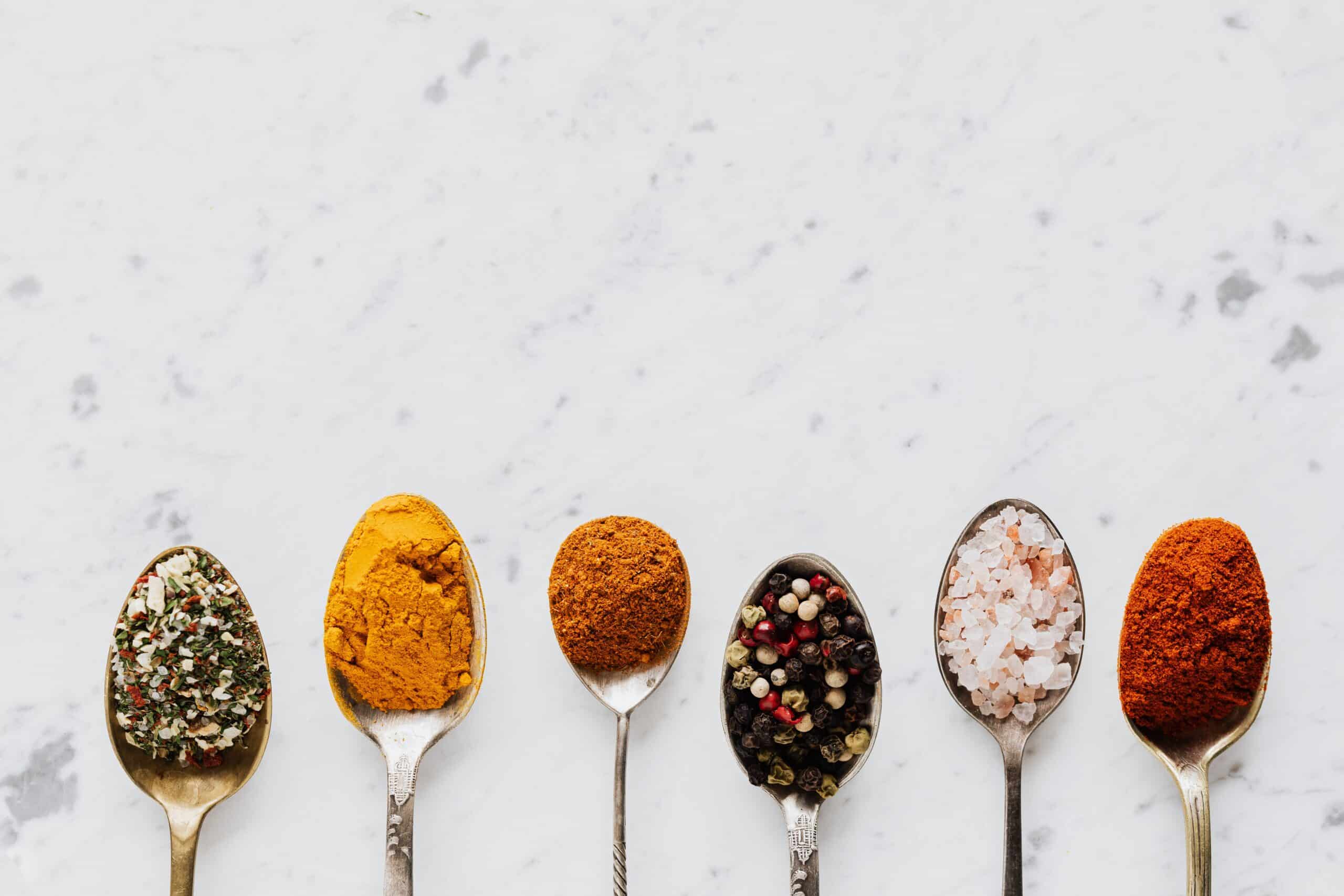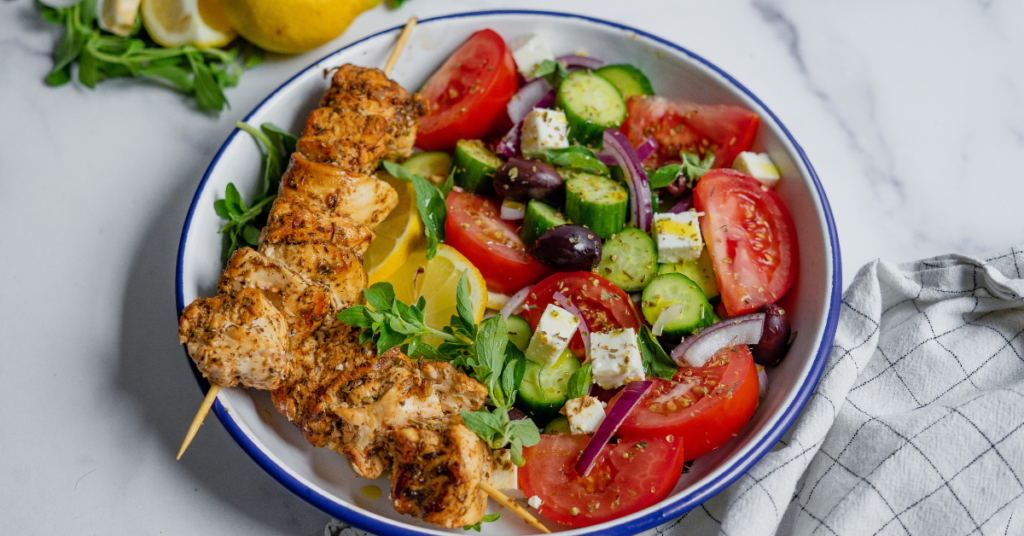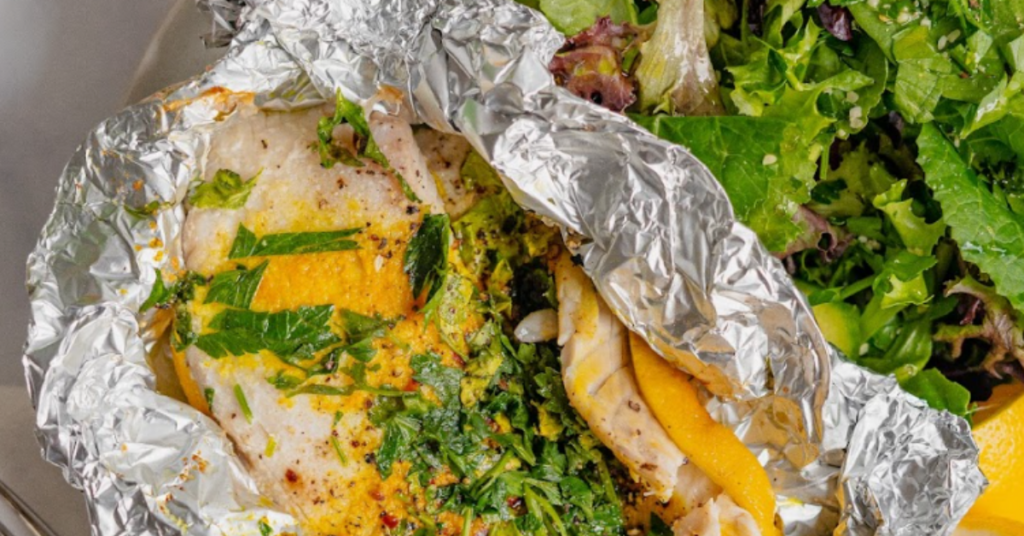As Stronger U’s recipe dude, I aim to provide simple recipes that cover a wide array of dietary needs. Look through the Stronger U Members Only Recipe Album or the Stronger U Pinterest, and you might find yourself overwhelmed by all the options. That’s why I think it’s important to emphasize the basics.
While it’s possible to piece together a full week of eating with Stronger U recipes, it’s going to be a lot easier to use something like the 3-3-3 method in the early stages. As you gain experience with tracking consistently and cooking, then you can add in recipes and experiment with new foods.
Don’t mistake keeping it simple for eating boring meals, however. Below you’ll find five of my favorite tips and a beaucoup of ingredient ideas to keep the simple foods exciting. The flexible approach to eating used by the Stronger U community is a beautiful thing, and I intend to feed the fire.
Low-Calorie Condiments
Thanks to food science, there are more condiments and ready-to-eat sauces than ever before. Below you’ll find some of my favorites, but this list is far from definitive. Keep an eye out when shopping and have fun with these types of ingredients.
- Mustard
- Sriracha
- Soy Sauce or Liquid Aminos
- Worcestershire
- Fat-Free Greek Yogurt (use in place of sour cream for Mexican dishes or mix with just about anything else like ranch seasoning, bbq sauce, salsa, sriracha, mustard, etc.)
- Pickles and Pickled Peppers
- Lemon/Lime Juice
- Salsa
- Hot Sauce
- Other Premade Low Cal Dressings, Marinades, Sauces (i.e. Bolthouse Farms, Walden Farms, G Hughes)
A personal guideline I aim to stick to is keeping condiments under 30 calories per 2 Tbsp serving. Just because something is marketed as high protein, healthy, or any other buzzword, that doesn’t mean it’s good for your intake goal.
It’s also worth mentioning, you don’t want to go crazy with condiments, even the zero-calorie finds. Labels are confusing and food companies get the luxury of rounding down on tiny serving sizes. A teaspoon of mustard might have zero calories on the label when it’s actually more like 2-3 calories. That may seem insignificant but when you’re using condiments at every meal, every day, for months, for years, it adds up.
Not to mention, condiments can be highly processed and contain tons of artificial sweeteners. I may joke around about brushing my teeth with cheddar powder and Walden Farms syrup, but it’s never a bad idea to use moderation in this area. Especially if you notice digestive issues or sensitivities to certain foods.
Make Your Fat Intake Count
We all know how delicious a heaping spoonful of peanut butter can be or how much flavor a little guacamole adds to a dish. These high-fat foods may seem off limits with your current intake, but it’s worth investigating potential tradeoffs.
If you’re currently eating chicken thighs, thick cut bacon, or fattier cuts of meat, for example, you could potentially work other fats in. This is especially true where the extra fat doesn’t make or break the meat. (Think: extra lean ground beef or poultry-based bacon)
Beyond trace amounts of fat from meat, you may find a few extra grams from other sneaky foods like dressings, yogurt or dairy, protein bars or snacks, or nuts and seeds on salads. Or even using our original example, peanut butter, trading it for powdered peanut butter could free up 5-10 grams of fat to go elsewhere.
Keep in mind, the goal isn’t to go fat-free everywhere to eat a small jar of peanut butter at night. It’s to spruce up main meals with tasty fat sources.
Season or Marinate Proteins Ahead of Time
This may sound like a duh tip, but it’s worth briefly covering. I’m admittedly a lazy cook, which is a bit ironic since I kinda cook for a living. With recipes that are going in the Instant Pot or crockpot, I typically add things straight to the pot and fire it up.
Over time, I’ve found that taking a few minutes right after shopping or ahead of prepping to add dry spices or the recipe’s sauce to the protein is well worth it. Doing this makes proteins more tender, flavorful, and better overall.
Most of the Stronger U recipes skip this step for the sake of simplicity. But don’t be afraid to stray and add sauces, seasoning, or marinades ahead of time.
The 5-Second Path to Seasoning Mastery
The quickest path to greatness in the area of spices and seasonings: buy them premixed.
(Really, can you imagine buying all the different ingredients instead of just going to Trader Joe’s and getting everything-but-the-bagel seasoning?)
Seriously, there’s no shame in buying several chicken-specific or cuisine-specific seasoning combos. If you love Asian food, for instance, but have no clue what spices and herbs go together to create the flavors, just buy them.
Texture, Crunch, and Unique Flavors
I can’t think of many meals more conducive to getting shredded than chicken breast and green veggies. Also, I have a difficult time coming up with a meal more boring.
Not to pick on chicken and broccoli exclusively, there are plenty of meals you could plug into the above sentence. Even if you season and cook the chicken and veggies perfectly, things get boring. A great way to keep things interesting is using add-ons.
Here’s a list of ideas:
- Diced Peppers, raw
- Caramelized Onions (for unique flavor) or Raw Onion (for crunch)
- Roasted Starchy Veggies (like thinly sliced potatoes)
- Berries, Apples, and Fruits
- Sauteed Mushrooms
- Precooked Bacon Crumbles (or bacon bits)
- Toasted Seeds/Nuts (careful with fat and calorie content)
- Depending on your need for carbs or fats, crumbled tortilla chips (carbs) or pork rinds (fat and protein) can add texture to soft veggies and salads.
- Rice Cakes, Puffed Cereal, and Undercooked Rice/Pasta
- On cooking veggies, adding a bit of cooking spray or teaspoon of oil to a super hot pan and pan roasting them for a few minutes goes a long way.
- How could I write this article and not include cheddar powder? Cheddar powder, nutritional yeast, and other powdered ingredients are a great way to add massive amounts of flavor. You can use them directly as toppings or reconstitute with liquids to make lower calorie, full flavor sauces.
Most of the examples above are on the lower end of the calorie spectrum and don’t require large quantities to abolish meal boredom. That said, tread carefully with add-ons and try to plan them ahead of time when possible.
The Takeaways
Remember to keep it simple if you’re in the early stages of your Stronger U and nutrition journey. Use other foods and ingredients to give otherwise boring meals a facelift but be mindful of quantity/quality. My goal is to make “macro friendly” or “healthier” food as tasty as possible, but the truth is, fat loss requires some sacrifice. Burgers, pizza, and ice cream can only be cleaned up so much.
Get comfortable with eating more boring meals. But do it in style.









